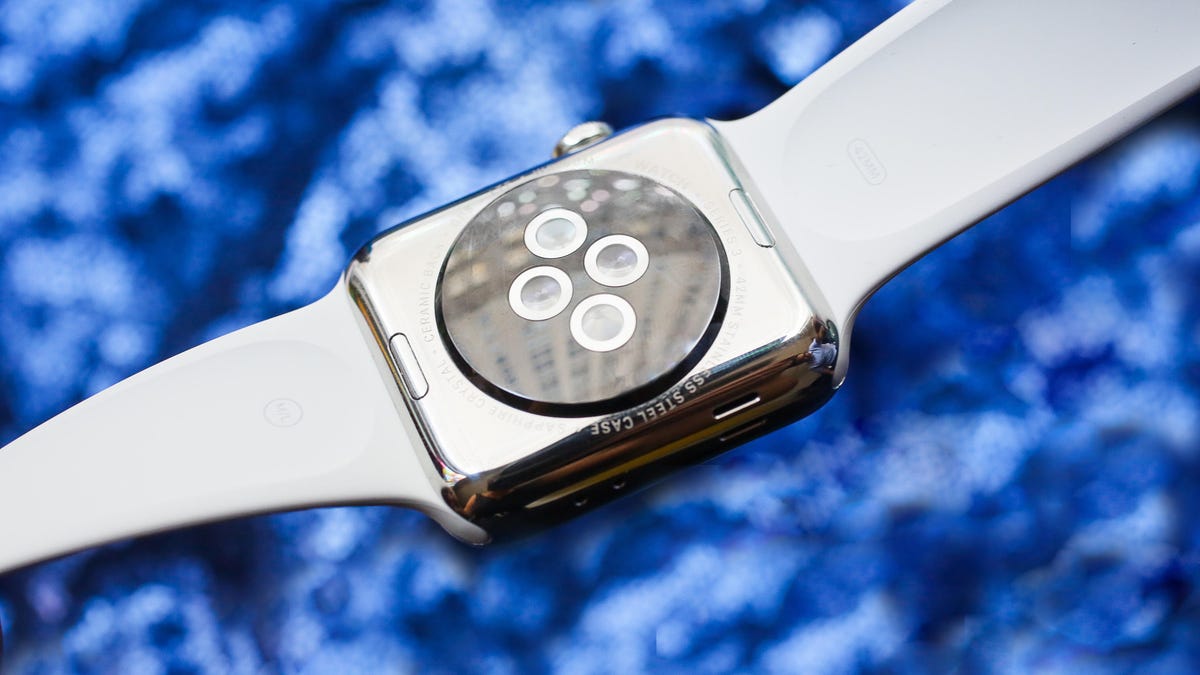Apple Watch 4 wish list: These key changes could put it over the top
Three years after it was first released, the Apple Watch could finally get some of its biggest updates ever.

Apple Watch, Apple Watch Series 2, Apple Watch Series 3. The naming convention suits Apple's approach to its watch updates. They've felt like gradual iterations, not huge leaps.
The basic design of the Apple Watch, and even most of its key functions, have remained largely the same, with speed and extra features added on over time: GPS, water resistance, cellular connections.
That might change with the Apple Watch Series 4. A convincing image published by 9to5mac appears to be a leaked Apple marketing shot of the presumed Series 4, which is widely expected to be unveiled at Apple's big Sept. 12 event alongside rumored new iPhones.
Apple didn't respond to CNET's request for comment on the image. But assuming it's the real deal, it shows a brand-new, improved and information-heavy watch face. It also appears to have a bigger edge-to-edge screen, as rumored. (It's a bit hard to tell without an older model in the shot for direct comparison.)
Could this be the next Apple Watch? Sure seems like it.
If you're wondering what Apple's next watch could introduce that would make a difference the fourth time around... the answer could be a lot more than you might think. I've worn and reviewed every Apple Watch model to date. I've also worn a lot of other watches. And this is what the next watch needs most. If it gets them all -- or even most -- it would add up to a big upgrade.
New watch faces, and a watch face store.
Most reactions to the leaked Apple Watch photo are reacting, I think, to how good that watch face looks. How useful it seems. It packs in twice as many complications -- those tiny real-time watch readouts like weather, heart rate and fitness stats -- as typical Apple Watch faces do now. It doesn't look too busy. It's different.
Watches are about watch faces. The Samsung Galaxy Watch's best feature is its watch face assortment. Fitbit, Google's Wear OS and even the old Pebble had watch-face stores. Apple has held back and I've complained about it before, but sooner or later Apple will need to embrace third-party faces. Maybe a new, larger-screened Apple Watch is the right time to make a big watch face splash at last.
Better battery life.
The Apple Watch Series 3 lasts about one and a half days on a charge. If you have the LTE version, or if you turn GPS run tracking on, that time drops precipitously. The Samsung Galaxy Watch does better. Google and Qualcomm's expected next-gen WearOS smartwatch chips should do better than the Series 3. Fitbit does better, too. The Amazfit Bip, one of Amazon's best-selling fitness smartwatches, does far better.
Apple could improve battery life not through a bigger battery, necessarily, but a more efficient processor that handles super-low-power modes. Maybe that could enable true multi-day battery life, and even an extended watch mode that lasts up to a week or more. It's not unreasonable, and would open the door for some other useful features (see below).
An always-on watch face.
With better battery and more efficient processors, there could be a way to keep the watch face on all the time. Samsung and Google Wear OS can already do this.
Sleep tracking.
Another missing feature on Apple Watches, and something that fitness trackers usually have standard. Samsung Galaxy Watch has it, Fitbit and Garmin have it. I find sleep tracking pretty useful just to get a sense of when my bedtime average is.
An easier way of dealing with apps.
More up front, less buried in the back. The Apple Watch's confusing honeycomb grid of apps is something I barely ever use. I pull up apps from in-watch shortcuts from the watch faces, if at all possible. Back to that leaked photo: The more advanced watch complications have more advanced graphics and extra readouts. If more apps are instead becoming customizable complications that can be added to watchfaces, that's a huge improvement over toggling between apps. It would also make the watch a lot easier to use on a daily basis.
Add 3D Touch.
First of all, let me be clear: Apple's pressure-sensitive 3D Touch technology still feels like the most underutilized (and unnecessary) aspect of current iPhones. On an Apple Watch, however, it could be tremendous. Current Apple Watches use Force Touch, which is a different proposition: It doesn't allow you to press specific pressure-sensitive areas on the display, like iPhones can.
Being able to press in to get a full five-day forecast on a Weather readout on the watch face, or pop into a sports score to see a quick breakdown of stats and then hop back out, could turn watch face complications into expandable widgets. That could be a lot more useful than opening full apps.
Make the LTE watch even more standalone.
You can't use the cellular Apple Watch if you don't have an iPhone in the first place, and some of its key features still lean on having an iPhone on and nearby. It would be really great, though, if you could set up the Apple Watch and download apps, new faces and music entirely without an iPhone nearby at all. Maybe it would make that cellular watch a true iPhone replacement for some people.
Will we get some of these? All of these? Any of these? We'll find out next week in Cupertino.
iPhone XS: Ten S, Excess or Xtra Small?: Welcome to iPhone's 2018 naming problem.
5 ways Apple can make the next MacBooks better than ever: The pros are covered, but what about the rest of us?

